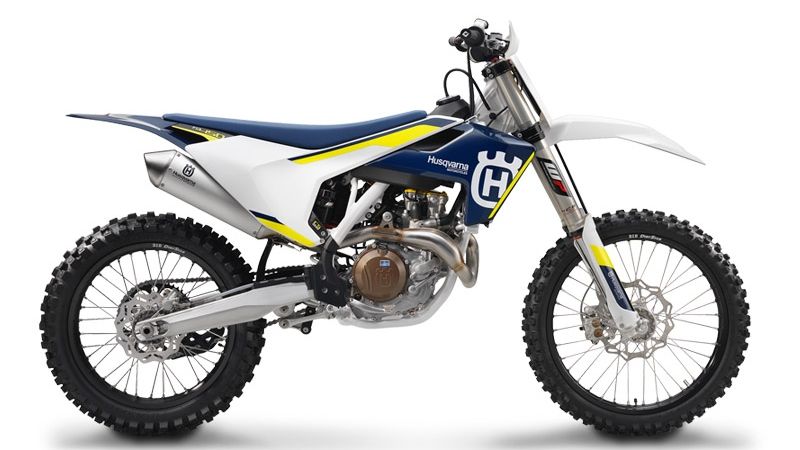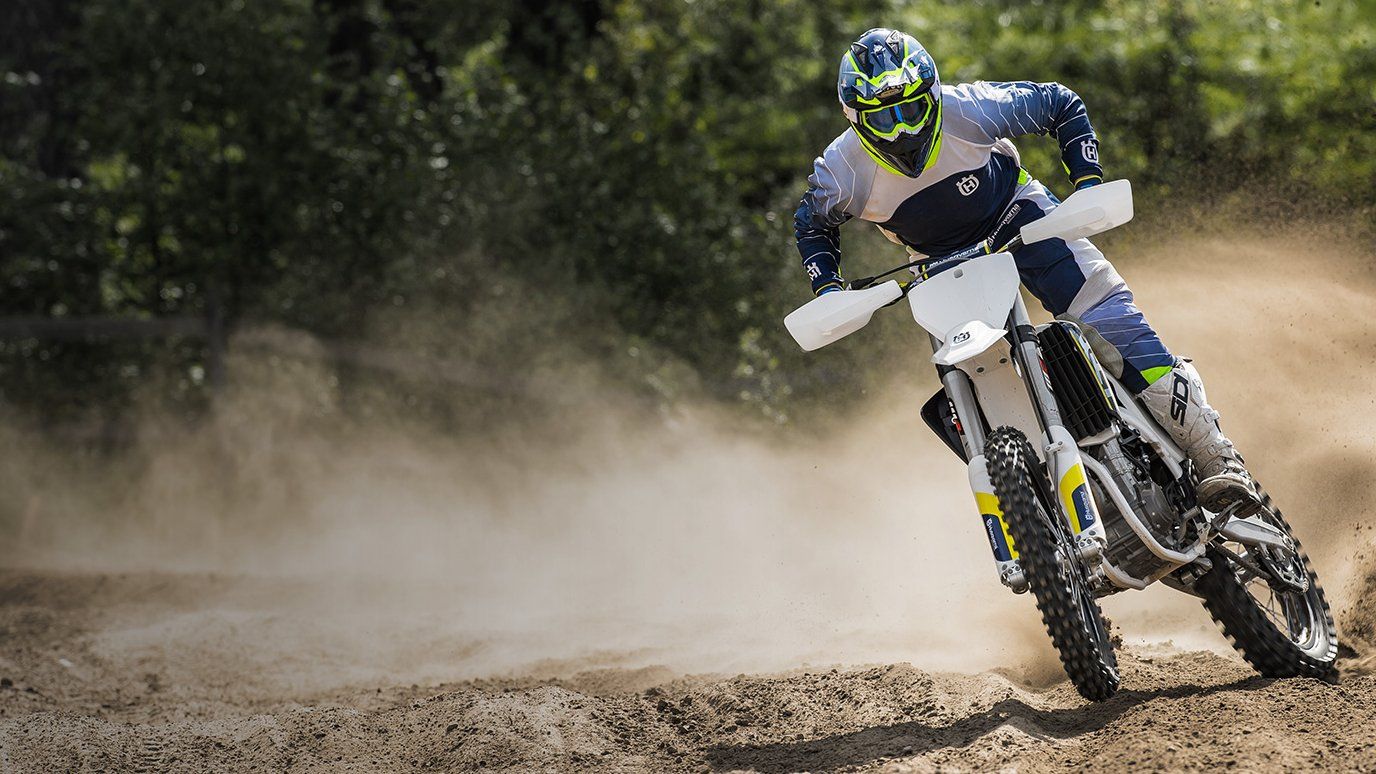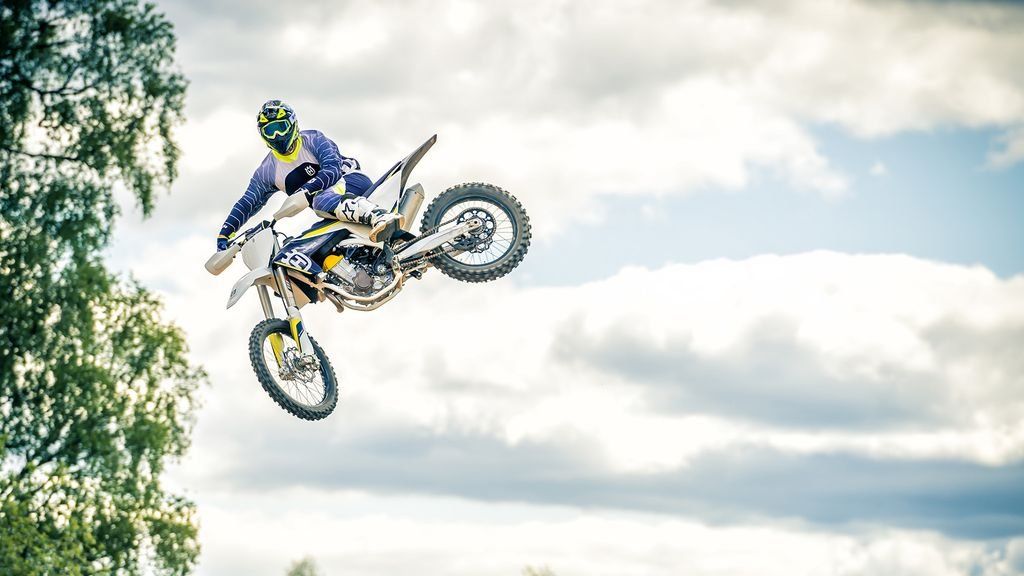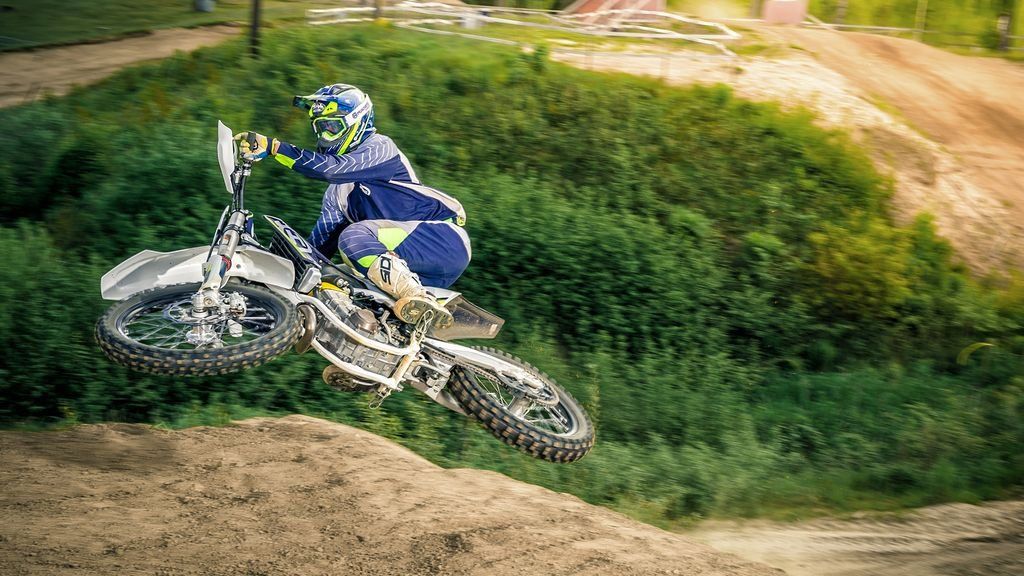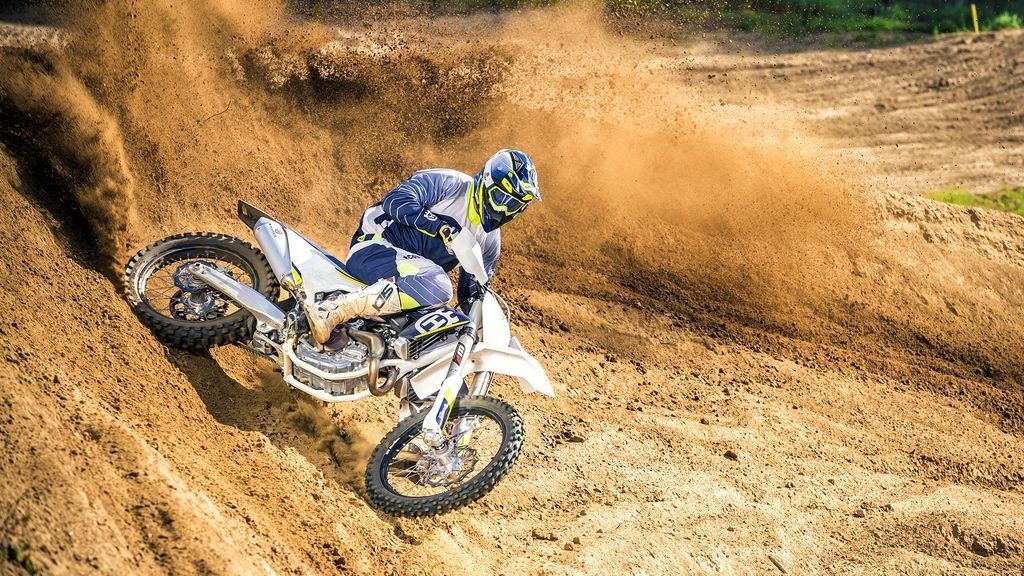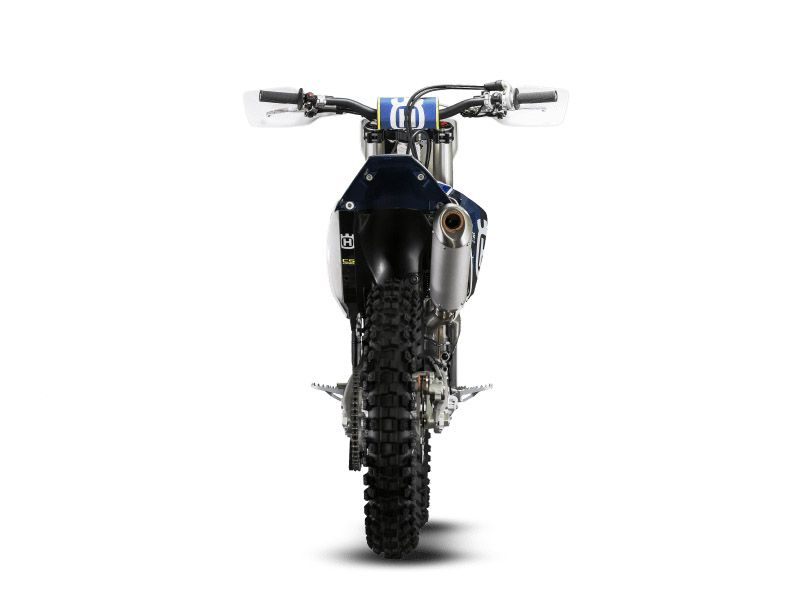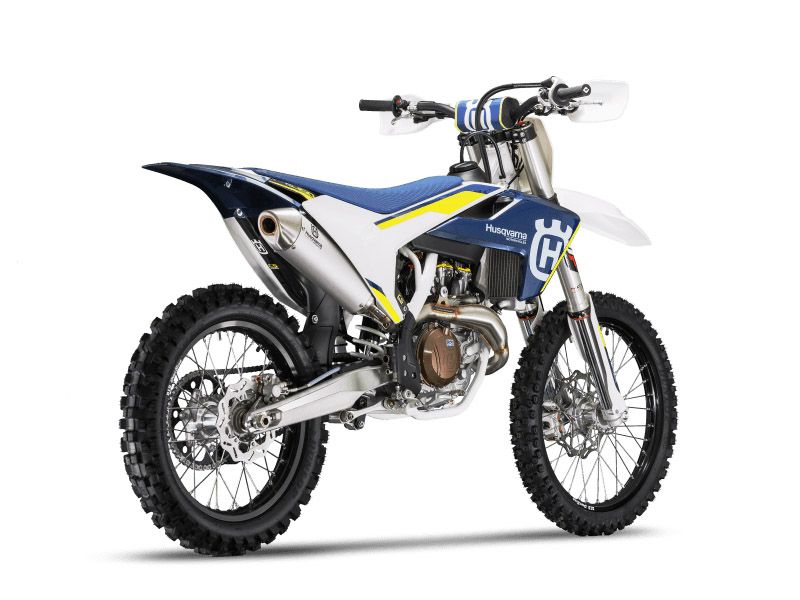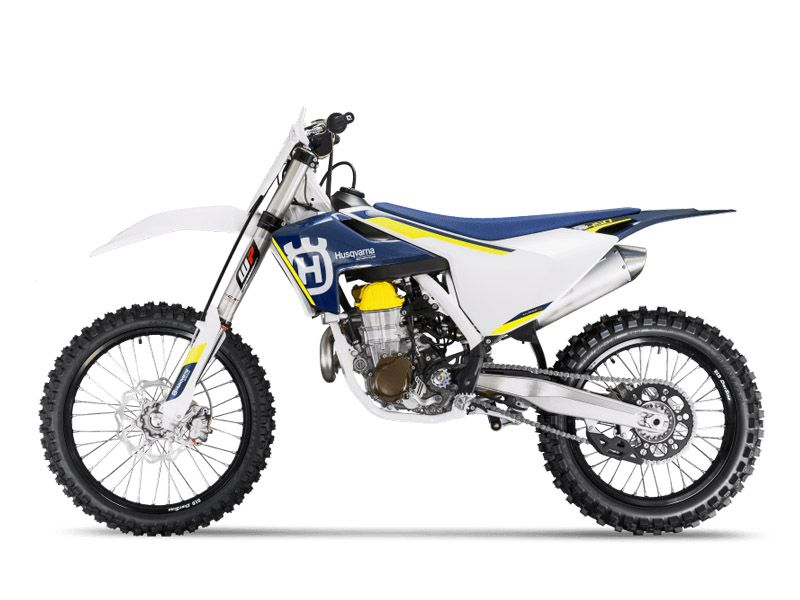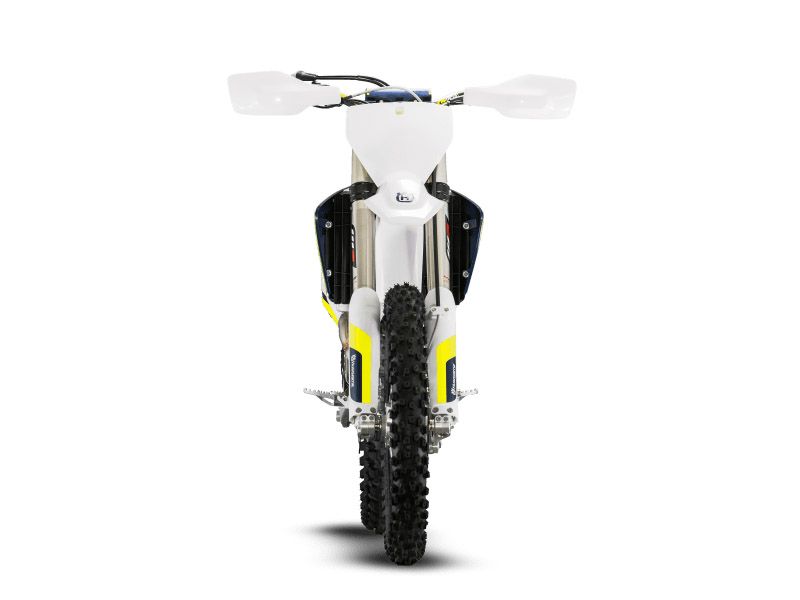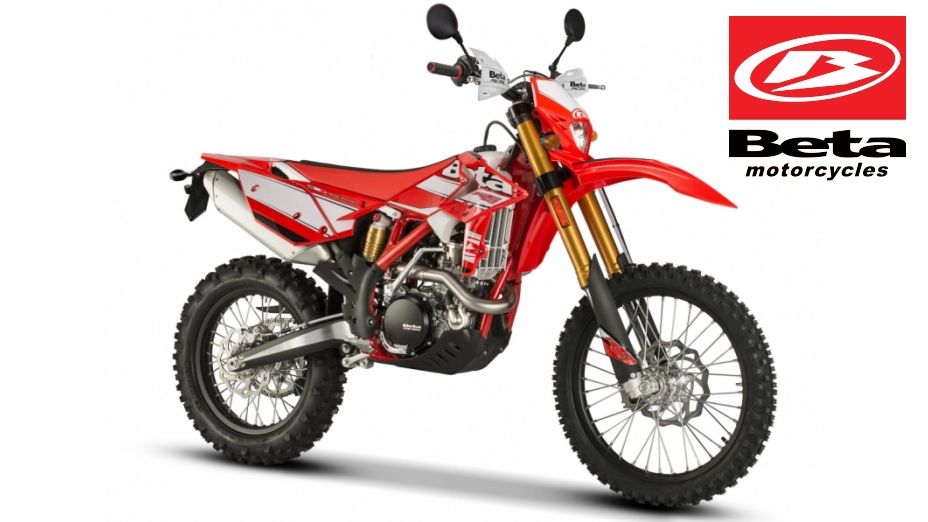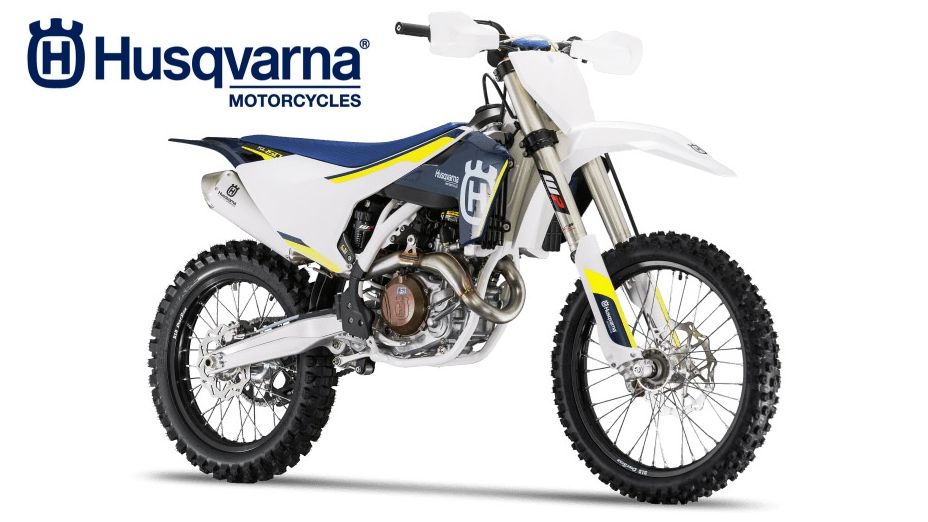Husqvarna->ke1952 approached the 2016 model year like it had something to prove, and maybe it does. The company survived a schism in 1987 when MV Agusta->ke947 bought the “Husky” name, and the core designers split off to form Husaberg->ke4643 in 1988. After passing through a few hands, the Husqvarna name and the Husaberg designers reunited in 2013 under the Husqvarna Motorcycles GmbH banner. Enter the 2016 FC 450. It comes chock full of tweaks and changes that improve upon the 2015 model, which was a successful model in its own right with several podium finishes in 2015. Let's take a look at what Husky has been up to since the reunion, shall we?
Continue reading for my review of the 2016 Husqvarna FC 450.
husqvarna-fc-450
- Make: Array
- Model: husqvarna-fc-450
2016 Husqvarna FC 450
- Make: Array
- Model: 2016 Husqvarna FC 450
- [do not use] Vehicle Model: Array
Design
As far as overall looks go, its a fairly classic Husky design with a post-modern flair. Right off the bat, we have a redesigned rider triangle meant to increase control and reduce rider fatigue. The seat was lowered a bit through the use of low-profile padding, but word on the street is the seat is a little too firm, to be kind. While the factory says it used a new, high-grip cover on the seat, I've heard riders describe it as slippery. (To be fair, I didn't ask what their pants were made of.)
Chassis
The factory tweaked the frame to allow for greater torsional rigidity with more longitudinal flexibility for an improved ride. While chrome-molybdenum steel makes up the main part of the skeleton, the subframe assembly is comprised of strong but lightweight carbon fiber that shaves 2.2 pounds off the total weight of the bike.
Inverted WP 4CS forks support the front of the bike, and come adjustable for compression and rebound damping via clicker dials. I've heard smaller riders comment that the front feels stiff, and bigger guys say the front feels soft. The lack of preload adjustment may be a problem for guys at the extreme ends of the size range, but the majority in the middle should find the front just about right. If not, there's always the aftermarket. The rear also gets the WP treatment with a coil-over monoshock redesigned to be 0.47 inch shorter, and work with softer springs. Suspension components on both ends allow for 11.8 inches of wheel travel, which is plenty for its intended purpose on the dirt->ke295 track. A dual-pot Brembo caliper binds the single, 260 mm front brake disc, and a single-pot caliper binds the 220 mm rear disc. While this is a little bit on the light side in streetbike terms, it's plenty for the dirt.
Ground clearance is good at 14.5 inches, and even though the seat has a new lower profile, it still has an unladen seat height of almost 38 inches, which is typical for motocross bikes.
Drivetrain
Husky's engineers built a water-cooled, one-lung, 449.9 cc mill that not only dropped some of the bulk of the previous model, but also shed some weight down to a trim, 61 pounds. This new-and-improved mill cranks out a maximum of 63 ponies, and comes tuned so you can ease into the powerband and have the best of both worlds – strong in the middle to top rpm range, but controllable and predictable at the bottom end.
Engine management falls to the Keihin EMS, and 44 mm, fuel-injected throttle body. The EMS allows you to switch between programmable engine maps you can tailor for power delivery on a gear-by-gear basis, and comes with a nifty “launch control” function that limits engine output for approximately two seconds for solid, controlled starts.
Power flows through the hydraulically-actuated, damped diaphragm steel (DDS) clutch with machined-billet basket to the five-speed transmission. Shifter performance got a boost on this tranny, with a low-friction facing on the components within the shift mechanism to make the shifts smooth and decisive.
Competitor
I picked an Italian bike to go head to head with the sort-of-Italian (the factory stayed in Italy) FC 450 – the 430 RS from Beta->ke2310.
The single-cylinder, liquid-cooled 430 RS is just a tad smaller at 431 cc versus the 449.9 cc Husky, but that is almost splitting hairs. Same with the induction – both run a throttle body with EFI, though the Beta lacks the sophisticated engine mapping and launch control of the Husky. Beta did get at least one thing right with the kickstarter as a backup, but I have to wonder if it's worth the weight in a closed circuit racing environment.
Suspension is also comparable with 11.4 inches of travel all around for the Beta, and 11.8 inches for the FC 450, but the Husky is the king of ground clearance here with 14.5 inches over the Beta's 12.6. That shows up in the seat height of course, with the FC 450 saddle at nearly 38-inches tall over the Beta's 36.6-inch seat. Not a big difference, but it may influence some buyers.
He Said
“I've always known that Huskie put out a good product, and this one does not disappoint. I love that some of the features are a result of a fusion between the two recently-reunited halves of the Husqvarna family, and I look forward to seeing how this bike does in the coming race year.”
She Said
My wife and fellow writer, Allyn Hinton, says, "Husqvarna made a lot of subtle changes for 2016 in the FC 450. Any one wouldn't be significant, but collectively, those changes carved off over 12 pounds of weight from the bike. The redesigned engine is almost four pounds lighter and a score of changes in the chassis saved over 7.5 pounds. Husqvarna has had several successful results in the Motocross World Championship and with a lighter, leaner and meaner FC 450 in its stable, Husky continues to position itself as a major brand in the motocross world."
Specifications
|
Engine: |
Single-cylinder Four-stroke engine, water-cooled |
|
Displacement: |
449.9 cc |
|
Bore: |
95 mm |
|
Stroke: |
63.4 mm |
|
Maximum Power: |
63 Horsepower |
|
Rev Limiter: |
11,500 rpm |
|
Starting aid: |
Electric starter |
|
Transmission: |
Five-speed, claw shifted |
|
Engine lubrication: |
Forced oil lubrication with two Eaton pumps |
|
Gear Ratios: |
16:32, 18:30, 20:28, 22:26, 24:24 |
|
Primary ratio: |
31:76 |
|
Secondary gear ratio: |
13:48 |
|
Cooling system: |
Liquid cooling system, continuous circulation of cooling liquid with water pump |
|
Clutch: |
Wet multi-disc clutch DDS / Magura hydraulics |
|
Ignition system: |
Contactless, controlled, fully electronic ignition system with digital ignition timing adjustment |
|
Frame: |
Central double-cradle-type 25CrMo4 steel |
|
Subframe: |
Carbon fiber reinforced polyamide |
|
Forks: |
WP Suspension Up Side Down 4CS |
|
Shock absorber: |
WP Monoshock with linkage |
|
Suspension travel, Front: |
11.8 inches |
|
Suspension travel, Rear: |
11.8 inches |
|
Brake system, Front: |
Disc brake with two-piston floating brake caliper |
|
Brake system, Rear: |
Disc brake with single-piston floating brake caliper |
|
Brake discs, Front: |
260 mm |
|
Brake discs, Rear: |
220 mm |
|
Wheel, Front: |
DID 1.60 x 21 inches |
|
Wheel, Rear: |
DID 2.15 x 19 inches |
|
Tire, Front: |
Dunlop MX52 Motocross 80/100-21 inches |
|
Tire, Rear: |
Dunlop MX52 Motocross 120/90-19 inches |
|
Chain: |
5/8 x 1/4-inch |
|
Steering head angle: |
63.9 degrees |
|
Triple Clamp Offset: |
0.9 inch |
|
Wheel base: |
58.5 ± 0.4 inches |
|
Ground clearance (unloaded): |
14.6 inches |
|
Seat height (unloaded): |
37.8 |
|
Total fuel tank capacity approx.: |
1.8 Gallons |
|
Recommended Fuel: |
Unleaded premium fuel (95 RON) |
|
Weight without fuel approx.: |
225.8 Pounds |

